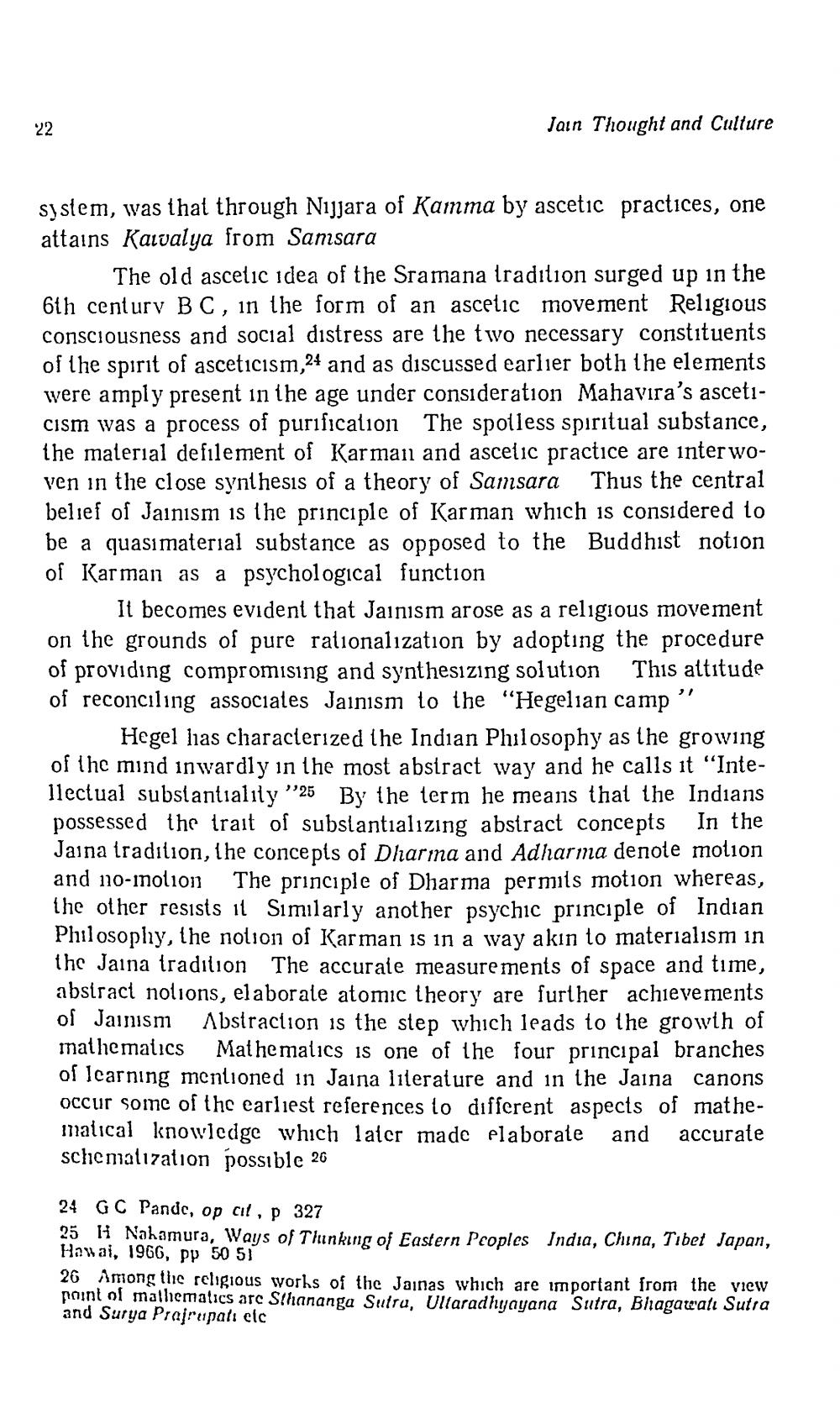________________
22
Jain Thought and Culture
system, was that through Nijjara of Kamma by ascetic practices, one attains Kaivalya from Samsara
The old ascetic idea of the Sramana tradition surged up in the 6th century BC, in the form of an ascetic movement Religious consciousness and social distress are the two necessary constituents of the spirit of asceticism,24 and as discussed earlier both the elements were amply present in the age under consideration Mahavira's asceticism was a process of purification The spotless spiritual substance, the material defilement of Karman and ascetic practice are interwoven in the close synthesis of a theory of Samsara Thus the central belief of Jainism is the principle of Karman which is considered to be a quasimaterial substance as opposed to the Buddhist notion of Karman as a psychological function
It becomes evident that Jainism arose as a religious movement on the grounds of pure rationalization by adopting the procedure of providing compromising and synthesizing solution This attitude of reconciling associates Jainism to the "Hegelian camp
31
Hegel has characterized the Indian Philosophy as the growing of the mind inwardly in the most abstract way and he calls it "Intellectual substantiality "25 By the term he means that the Indians possessed the trait of substantializing abstract concepts In the Jaina tradition, the concepts of Dharma and Adharma denote motion and no-motion The principle of Dharma permits motion whereas, the other resists it Similarly another psychic principle of Indian Philosophy, the notion of Karman is in a way akin to materialism in the Jaina tradition The accurate measurements of space and time, abstract notions, elaborate atomic theory are further achievements of Jainism Abstraction is the step which leads to the growth of mathematics Mathematics is one of the four principal branches of learning mentioned in Jaina literature and in the Jaina occur some of the earliest references to different aspects of mathematical knowledge which later made elaborate and accurate schematization possible 26
canons
24 GC Pande, op cit, p 327
25 H Nakamura, Ways of Thunking of Eastern Peoples India, China, Tibet Japan, Hawai, 1966, pp 50 51
26 Among the religious works of the Jainas which are important from the view point of mathematics are Sthananga Sutra, Ultaradhyayana Sutra, Bhagawati Sutra and Surya Prajrupati etc




